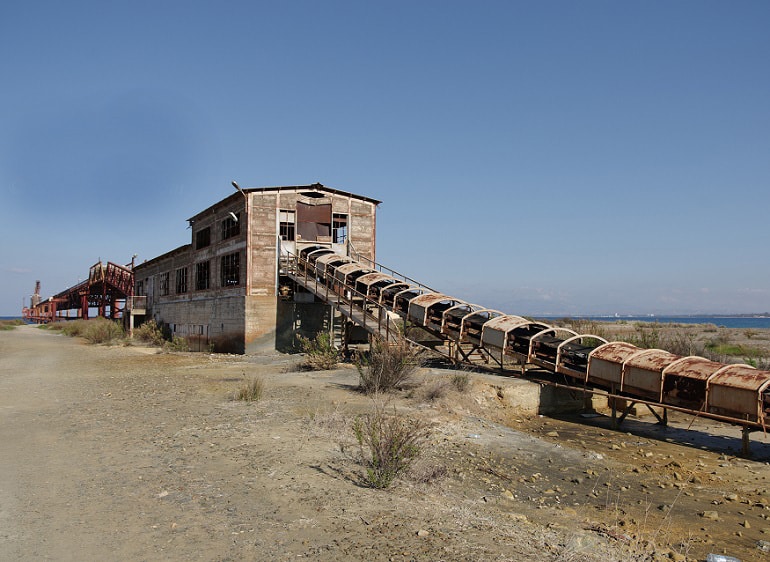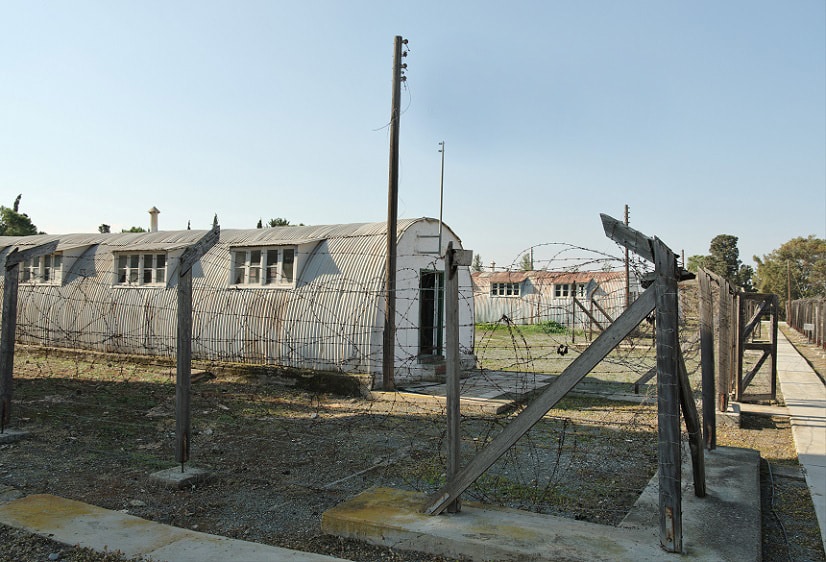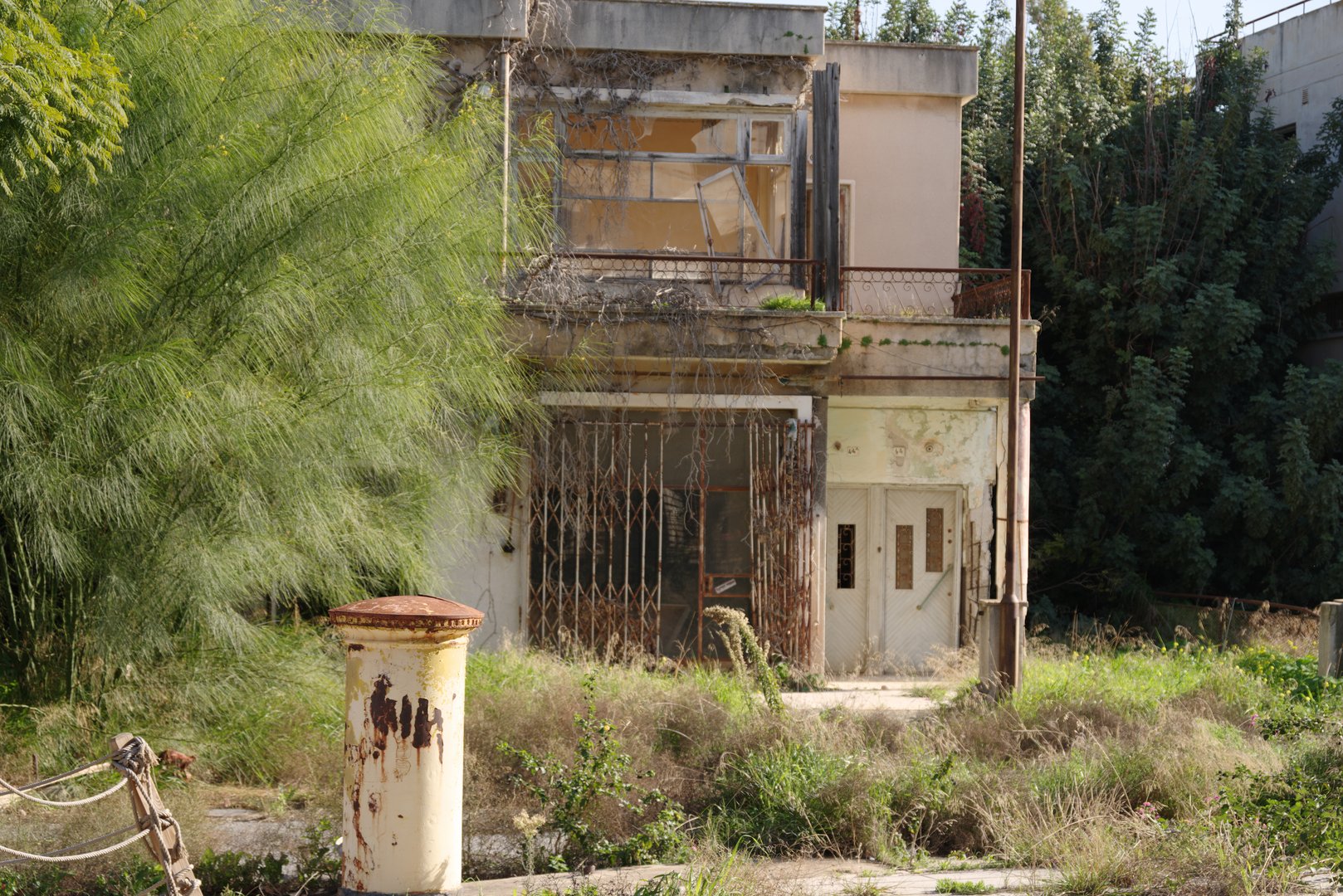A well-known Dark Tourism blogger recently visited Cyprus, discovering a wealth of locations. ALIX NORMAN finds out where they were
In January, Cyprus had a very unusual visitor. He wasn’t here for the sun, sea and sites; nor was he particularly interested in the island’s flora and fauna. Instead, Peter Hohenhaus had come for the Imprisoned Graves in Nicosia, the Museum of the National Struggle, and the former EOKA concentration camps. Rather than Akamas and Troodos, his visit was to include an abandoned mine and the red lake of serial killer fame. Because Hohenhaus is the world’s most experienced Dark Tourist.
Described as travel to places associated with dark chapters in history, tragedy, atrocity, war, disaster and abandonment, Dark Tourism may seem an odd sort of pastime. But for 59-year-old Hohenhaus, who blogs extensively about his travels, there’s more to this passion than meets the eye.
“For me, Dark Tourism is often somewhat like a pilgrimage,” Hohenhaus reveals. “It’s about paying respect to the victims. There’s a huge difference between reading about a place and its events from the comfort of your armchair, and actually seeing it in person. And though the visit may not always be uplifting, it’s nonetheless fulfilling in its own way. It certainly broadens one’s horizons.”

Hohenhaus at a desk of the launch control centre at the titan missile museum, Arizona
In addition to blogging about his travels, Hohenhaus released a book, Atlas of Dark Destinations, in 2021. In the past years, the German native has visited over 900 Dark Destinations – ranging from the former camps of Auschwitz to the wreckage of Chernobyl. He’s seen the abandoned diamond-mining settlements in Namibia, and the ghost town of Pyramiden high in the Arctic islands of Svalbard; the catacombs of Paris, and Napoleon’s grave on the island of St Helena. He’s visited Alcatraz, Hiroshima and the River Kwai. But he’s quick to correct the general assumption that Dark Tourism is a macabre or morbid affectation.
“The way Dark Tourism is misrepresented in sensationalist media articles can lead to misunderstandings,” he suggests. “Often, it’s portrayed as an almost voyeuristic undertaking. But really, what could be unethical or voyeuristic about visiting, say, a concentration camp memorial? Memorials are there to be visited! I believe Dark Tourism is essentially an antidote to the maxim that ‘those who forget the past are condemned to repeat it’. It’s the antithesis to escapism. And it’s educational. That’s a good thing.”
With dark-tourism.com, Hohenhaus has set out to challenge the public’s misconceptions; helping like-minded tourists learn more about these off-the-beaten-track destinations. “When I first heard of Dark Tourism in 2007, I found plenty of academic writing philosophising about the subject. But there was no practical info for like-minded travellers. And so I decided to build such a resource myself…”
Sixteen years on, he’s visited a wealth of countries, writing about places that rarely make the pages of tourist guides but are, nevertheless, important to humanity.
“There’s the lighter end of Dark Tourism, like Memento Park in Budapest,” he notes, “where unwanted statues from the communist era were dumped in 1990 and arranged in an almost playful manner. And sometimes you get sheer exhilarating adventure: a midnight climb down into the crater of the Ijen volcano in Indonesia to see its fabled blue sulphur flames. But in a place as thoroughly dark as Auschwitz you find the whole magnitude of what happened overwhelming; even if you’re there to try to understand how this could have happened, it still remains ultimately incomprehensible.”
In a similar vein, Hohenhaus was deeply disturbed by a visit to Chernobyl, which he suggests possesses “a unique character of ‘time travel’; simultaneously back into the Soviet past and forward into a dystopian post-civilisation future.” And most especially by Rwanda’s Murambi: “A genocide memorial, where the massacre victims were exhumed from their mass grave, the corpses preserved in white lime, and put on display. It’s primarily intended to counter genocide denial, so is aimed at locals,” he explains. “But if you visit as a westerner, as I did in 2010, it’s quite shocking and almost too much to handle. It’s a place that has haunted me to this day.”
- abandoned copper loading pier
- Kokkinotrimithia concentration camp
- Abandoned and overgrown ghost town of Varosha
Fortunately, Cyprus has been a little less discomfiting for this expert Dark Tourist. “As a Dark-Tourism destination, Cyprus may not be on a par with, say, Poland or Germany. But it too has its share of dark history and associated places, even if they are not so well known. The concentration camps at Polemi and Kokkinotrimithia, for instance, where the British colonial rulers incarcerated Eoka members in the 1950s, or the Imprisoned Graves in Nicosia, where Eoka members were executed and secretly buried within the prison grounds. Then of course there’s the Green Line, and the legendary ghost town of Varosha.”
But while many of these are fairly well-known, Peter visited a number of local destinations that are definitely off the beaten track – places that might appeal only to a Dark Tourist. “Perhaps the place that evoked the strongest feelings for me was the abandoned mine near Mitsero,” he discloses. “I entered a pitch-black mining tunnel and explored it to its very end. It felt adventurous,” he says, referencing “nightmarish visions of being trapped inside a collapsed tunnel!”
A trip to the Museum of the National Struggle in Nicosia and its Turkish equivalent in the occupied territories also evoked a number of emotions for the foreigner. “I noticed how steeped these places are in contrasting ideologies, and that disturbed me a bit. In the north, the Turkish invasion is portrayed as a ‘liberation’; in the south it’s an illegal occupation – all of which underscores just how deep the division goes and how unlikely a solution is. Although interesting to observe from the point of view of a visitor to the island, this can make you feel almost fatalistic and somewhat depressed.”
Yet, despite the many negative emotions associated with this type of tourism, Hohenhaus continues his travels. There’s a trip to Taiwan in the offing; just one of the two or three overseas destinations he usually visits each year. And he dreams of one day accessing the ultimate in Dark Tourism: The Titanic.
“But that,” he smiles, “would cost a fortune and is not really possible. For now, I’ll stick to destinations like Cyprus!”










Click here to change your cookie preferences